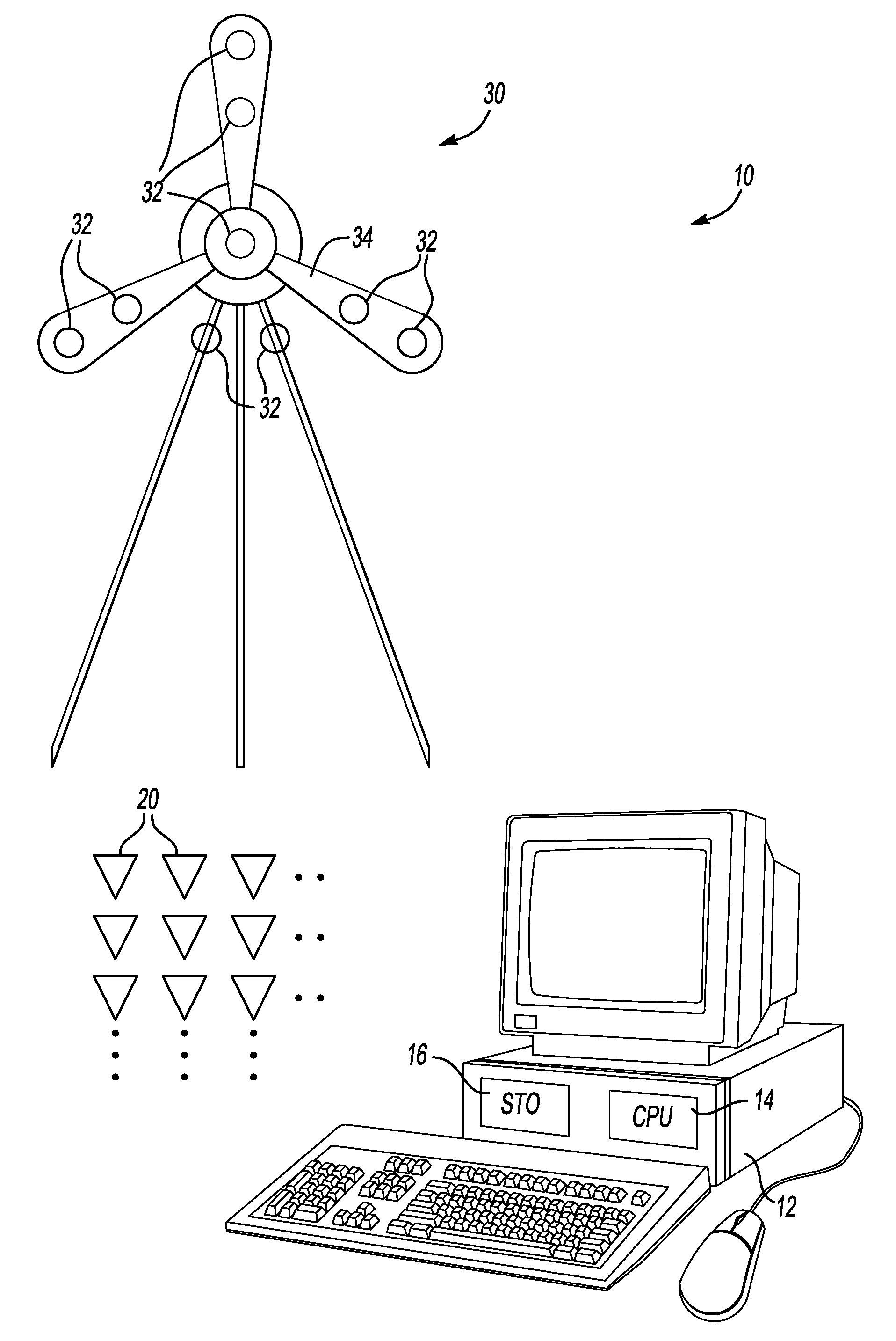Farfield analysis of noise sources
a farfield analysis and noise source technology, applied in the field of farfield analysis of noise sources, can solve the problems of not being able to fully damage the transducer, not being able to use the well-known nearfield acoustic holography (nah) and being near the sour
- Summary
- Abstract
- Description
- Claims
- Application Information
AI Technical Summary
Benefits of technology
Problems solved by technology
Method used
Image
Examples
examples
[0061]To examine the validity of FANS algorithms, we conducted experiments on identifying sound sources of a JBL® speaker that consisted of a woofer, mid-ranger, and tweeter. This speaker system was driven by an HP 8904A Multi-Function Synthesizer DC-600 kHz and McIntosh MC352 Power Amplifier to produce white noise inside a fully anechoic chamber in the Acoustics, Vibration, and Noise Control Laboratory at Wayne State University. The acoustic pressures were measured by an array of 48 PCB T130D21 Free-field microphones that were laid on the floor at 2.4 m away. The measured data were transferred to a personal computer through the Larson Davis Digital Sensor System Model 100 for analog to digital conversion, and taken as input to Eq. (3) to diagnose the locations of sources that are responsible for radiating the acoustic pressures. All data acquisition and post processing were controlled by the computer.
[0062]In general, a woofer, mid-ranger, and tweeter are designed to produce low-fr...
PUM
 Login to View More
Login to View More Abstract
Description
Claims
Application Information
 Login to View More
Login to View More - R&D
- Intellectual Property
- Life Sciences
- Materials
- Tech Scout
- Unparalleled Data Quality
- Higher Quality Content
- 60% Fewer Hallucinations
Browse by: Latest US Patents, China's latest patents, Technical Efficacy Thesaurus, Application Domain, Technology Topic, Popular Technical Reports.
© 2025 PatSnap. All rights reserved.Legal|Privacy policy|Modern Slavery Act Transparency Statement|Sitemap|About US| Contact US: help@patsnap.com



